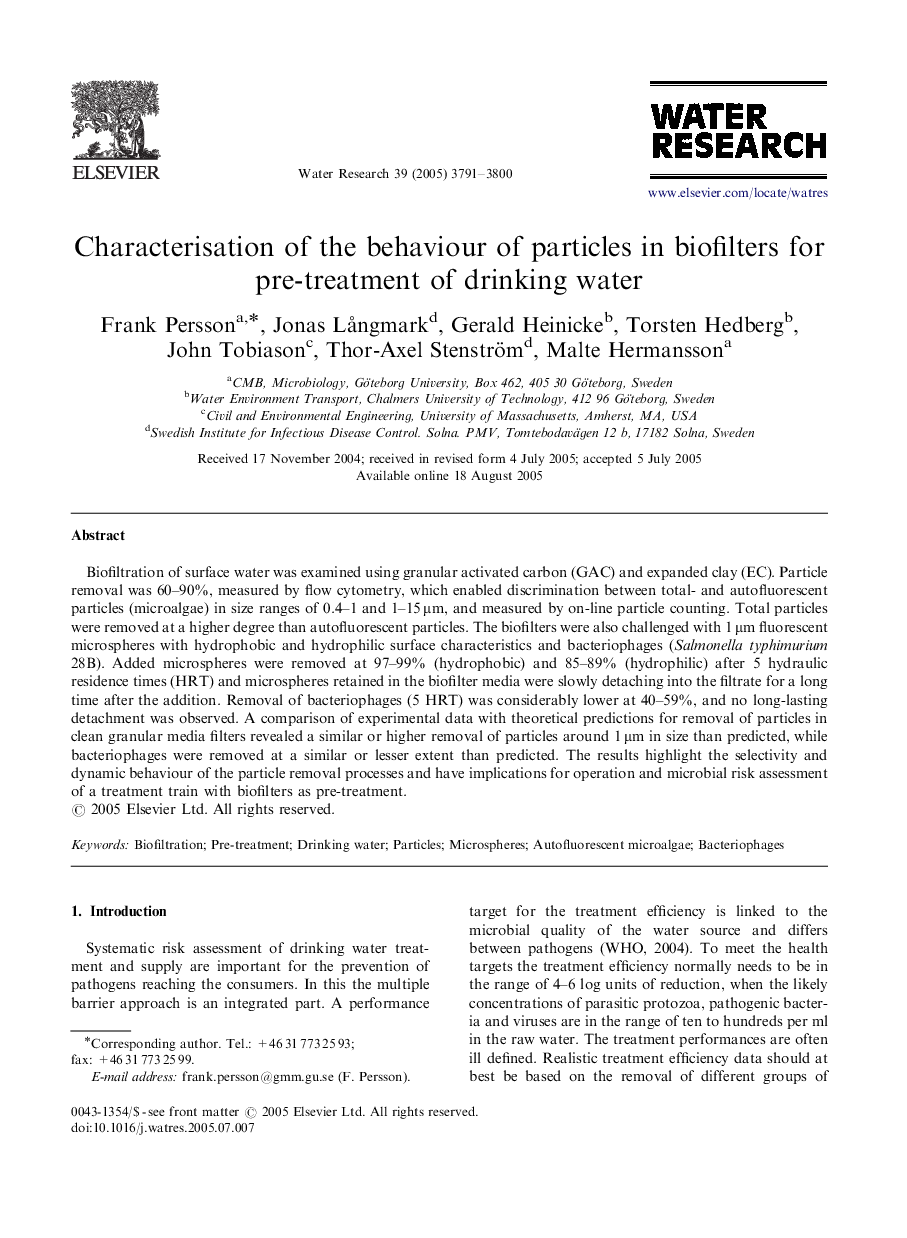| Article ID | Journal | Published Year | Pages | File Type |
|---|---|---|---|---|
| 4486161 | Water Research | 2005 | 10 Pages |
Biofiltration of surface water was examined using granular activated carbon (GAC) and expanded clay (EC). Particle removal was 60–90%, measured by flow cytometry, which enabled discrimination between total- and autofluorescent particles (microalgae) in size ranges of 0.4–1 and 1–15 μm, and measured by on-line particle counting. Total particles were removed at a higher degree than autofluorescent particles. The biofilters were also challenged with 1 μm fluorescent microspheres with hydrophobic and hydrophilic surface characteristics and bacteriophages (Salmonella typhimurium 28B). Added microspheres were removed at 97–99% (hydrophobic) and 85–89% (hydrophilic) after 5 hydraulic residence times (HRT) and microspheres retained in the biofilter media were slowly detaching into the filtrate for a long time after the addition. Removal of bacteriophages (5 HRT) was considerably lower at 40–59%, and no long-lasting detachment was observed. A comparison of experimental data with theoretical predictions for removal of particles in clean granular media filters revealed a similar or higher removal of particles around 1 μm in size than predicted, while bacteriophages were removed at a similar or lesser extent than predicted. The results highlight the selectivity and dynamic behaviour of the particle removal processes and have implications for operation and microbial risk assessment of a treatment train with biofilters as pre-treatment.
